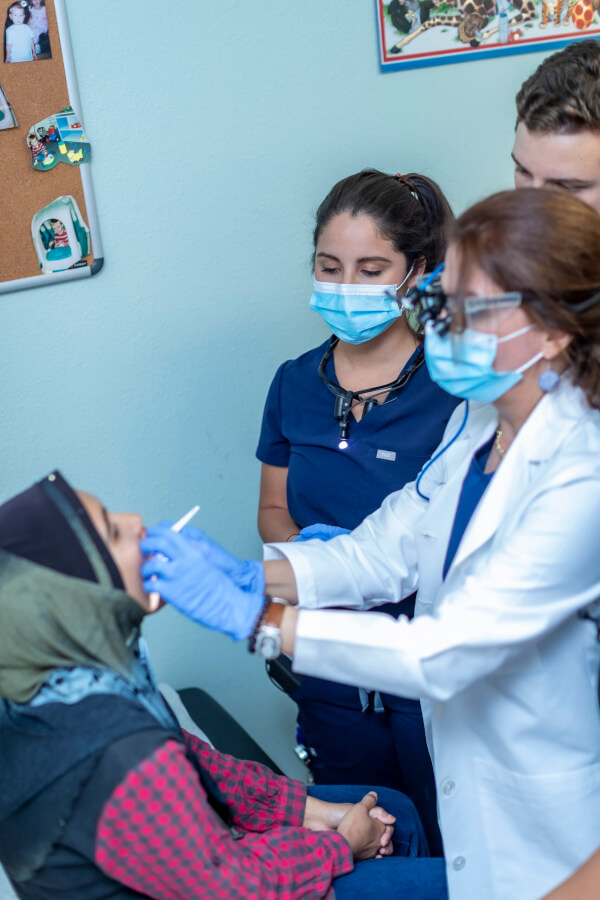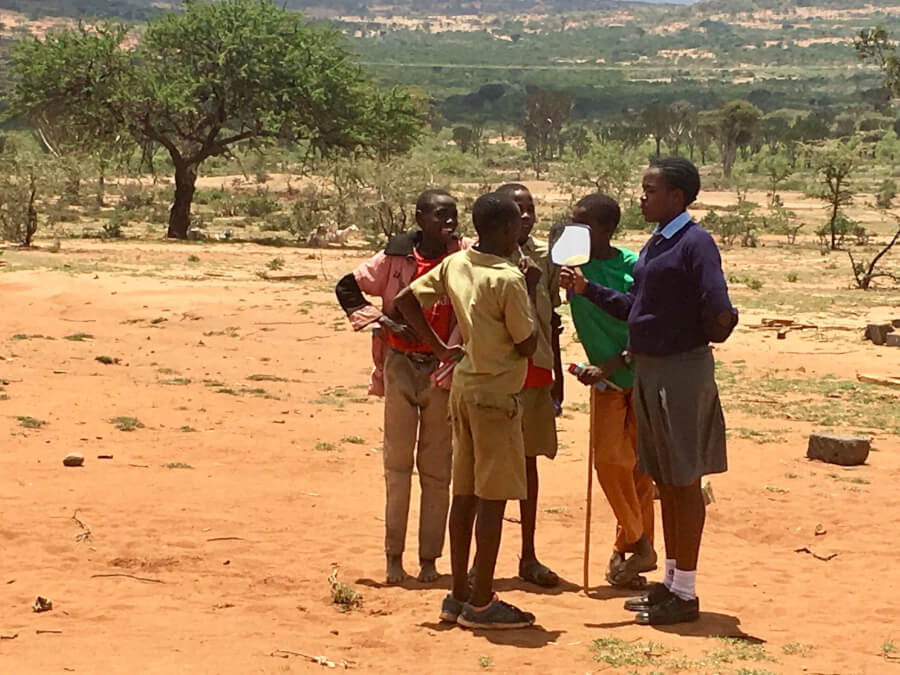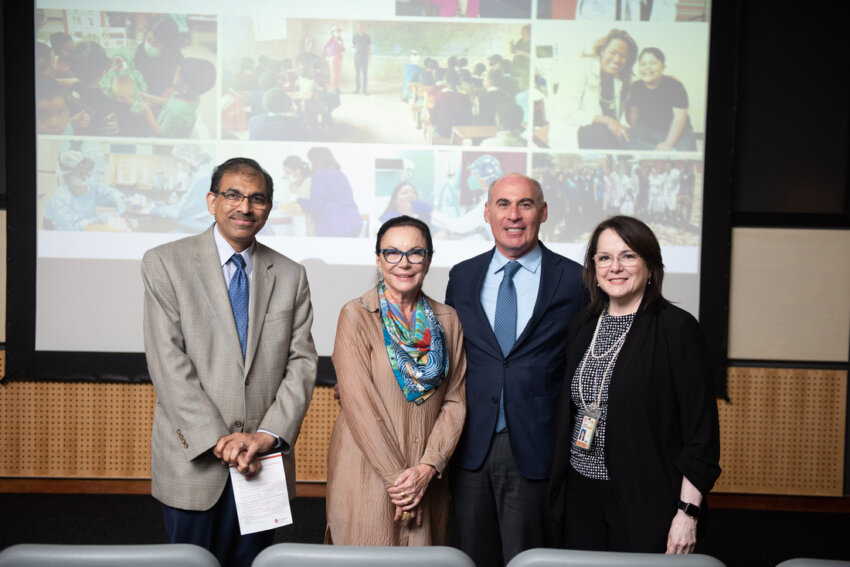The University of Texas Health Science Center San Antonio School of Dentistry launched its new Center for Global and Community Oral Health during a lecture event Sept. 28.
The new center is designed to bring together various existing outreach and research programs under one umbrella to study and develop solutions to the most pressing dental challenges facing the global population today, said Brij B. Singh, PhD, associate dean of research.
“Our vision is to transform community and global oral health through education, research and innovation,” he said. “The number of people with untreated oral conditions worldwide has reached 3.5 billion. Oral diseases are the 4th highest cause of financial burden in the most industrial countries. If we really want to make lives better, we need to focus on oral health.”
To do this, Singh said the center will aim to increase access to oral health care to eliminate health disparities, integrate oral health care into medical care to prevent systemic disease and disseminate oral health information to increase health literacy with the ultimate goal of being a world leader in community oral health.
A local focus

During the launch event, Associate Dean of External Affairs Juanita Lozano-Pineda, DDS, MPH, provided insight into the extensive history and progress of the school’s community-based programs, which now fall within the center.
“Since 1984, the school has established collaborative partnerships with federally qualified health centers, city health departments, school districts, non-profit organizations and hospitals,” she said. “These partnerships have allowed students to engage with a diverse patient population, providing services that range from pediatric to geriatric care and extend to also compassionately treat patients with mental health challenges and those experiencing homelessness.”
The center’s outreach programs currently partner with 76 affiliated training sites in San Antonio and South Texas where primary dental care and preventive services are provided. In the 2023 fiscal year, nearly 18,000 patients received low-cost care. The current market value of the care provided totaled over $7.4 million.
One of the center’s most recent collaborations is with Methodist Health Ministries’ Wesley Nurses. The Wesley Nurses initiative, which provides oral health education to medical professionals in Bexar County and in 11 cities, including Del Rio, Laredo and Uvalde, aims to create a referral process between health care providers and dentists, facilitating better management of individuals’ oral and systemic health, Pineda said.
A global lens
With the goal of being considered a world leader in community health, the center is establishing similar programming in other countries.

Far beyond its immediate community, one of the center’s programs is providing dental screenings and oral health instruction to an all-girls boarding school in Kenya. Armed with their new health knowledge and proper oral hygiene techniques, the students are sent out to teach their families and peers at neighboring schools the same information. The students become health care advocates who represent 47 counties throughout Kenya.
Research professor Yvonne De Paiva Buischi, DDS, PhD, followed a group of students who participated in the program for two and a half years. “Girls enrolled in our program had significant positive changes in their oral health and a widespread desire to empower others,” she said.
Buischi and her team published their study’s findings in the International Journal of Dental Hygiene this spring. “The oral health education program showed to be highly effective,” Buischi said. “From baseline to the 2.5-year post-implementation assessment, a 98% caries reduction was observed. Plaque was down by 84% and gingival inflammation by 82%.”
Due to the model’s success, Buischi is helping to evaluate the feasibility of introducing similar initiatives in Brazil and even along the U.S.-Mexico Border region of Texas and in Florida. The model is viewed as an effective method of introducing oral health information to vulnerable populations.
Elevating care for all
“The center was many years in the making,” said Peter M. Loomer, DDS, PhD, MBA, professor and dean of the School of Dentistry. “It will allow us to collaborate even further within our own university, throughout the country and the world. In working with others, there are things we learn and bring home to our own institution. Likewise, we will be able to share information with others, improving oral health internationally.”
With the research and programming of 15 established principal investigators founding the center, Singh anticipates they will provide the school a competitive advantage when it comes to seeking funding for existing research in cavity prevention, diabetes and oral health, craniofacial development, salivary gland dysfunction and more.
“The collaboration and partnerships each expert brings to the table will drive our research,” Singh said. “The information we will together be able to produce will, we believe, improve global health outcomes.”


